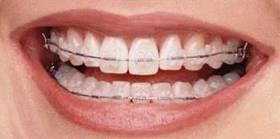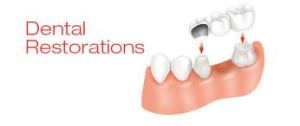You must be aware that minerals and vitamins are necessary for the overall health of our body but are you aware that these nutrients are equally necessary for the oral health? Each vitamin and mineral have different benefits for your oral hygiene especially kids as they are growing and require nutrients for development of their bones and teeth. There are some nutrients that are specifically great for the teeth and gums of your children.
Kids must get vitamins from a healthy and balanced diet, which should include:
- Milk including dairy products like yogurt and cheese and mostly low-fat items for kids over 3 year
- Sufficient amount of fresh fruits and green and leafy vegetables
- Whole grains and cereals like brown rice and steel cut oats
- Protein in fish, eggs, chicken and meat
Which Kids Need Vitamin Supplements?
Due to busy parents, home-cooked food may not be always available for well-rounded meals hence it is recommended to have a daily multivitamin supplement for:
- Children who are not eating daily and balanced meals comprising of fresh and whole foods
- Fussy kids who are not eating enough
- Children with chronic medical conditions like digestive troubles or asthma, particularly if the kid is under medications, it is advisable to speak with the dentist for kids first prior to starting a supplement in case your child is under medication
- Specifically active children who play physically demanding games
- Children eating a great deal of fast foods, processed foods and convenience foods
- Children eating vegetarian diet; as they may lack iron and require iron supplement, a dairy-free diet; they may require calcium supplement, or any other restricted diet
- Children who consume a whole lot of carbonated sodas, which can extract minerals and vitamins from their bodies
Top Minerals and Vitamins Necessary for Oral Health of Kids
Some of the minerals and vitamins are necessary and are important for growing children and their dental growth, which include:
Vitamin A
It catapults usual development; bone, teeth and tissue repair work; along with healthy eyes, skin, and promotes immune responses. Some great sources of Vitamin A include cheese, milk, cheese, yellow and orange vegetables like squash, yams, carrots, eggs etc.
Vitamin B
There is a package of B vitamins — B2, B3, B6, and B12 that aids metabolism, produces energy and healthy nervous and circulatory systems. Some good sources of vitamin B include chicken, meat, fish, eggs, nuts, milk, beans, cheese, soybeans etc.
Vitamin C
This vitamin simulates healthy muscles, skin and connective tissues as said by kid’s dentists. Best sources of this vitamin include kiwi, citrus fruit, tomatoes, lemon, strawberries, and green vegetables.
Vitamin D
It promotes tooth and bone development and allows the body absorbs calcium. This vitamin is found in abundance in milk and other consolidated dairy products, fish oil and egg yolks. The most ideal source of this vitamin is the natural one — sunlight.
Calcium
It helps build consolidated bones and teeth of a child. Some ideal sources are milk, yogurt, cheese, and calcium-based orange juice.
Iron
It builds muscle and is also essential for developing red blood cells and development of teeth. Iron deficiency may pose threat in adolescence, particularly for girls when they reach their puberty. Some best sources of iron include red meats, beef, spinach, turkey, spinach, beans, and pork.
Megavitamins
Giving heavy doses of minerals and vitamins aren’t suggested for children by us. Vitamin A, D, E and K, which are fat-soluble vitamin, may act as toxic to kids if overdose is taken. The same is applicable for the iron supplement too.
Fresh Foods – The Ideal Source of Best Vitamins
Healthy children receive the best health depending on what you give them to eat. If you wish to see your kids healthy and fit, serving a great variety of whole and fresh foods is the key. This is far much better than offering kids multivitamin supplements. It has been established that most minerals and vitamins in foods are having high quantity of proteins and carbohydrates and least quantity of fats. Fresh vegetable fruit also add to its nutritional package.
To offer kids a complete food, aim for variety of food, vegetable and fruits not just more food. Deficiency of proper nutrition may lead to several tooth disorders like well gums, teeth and cavities.
Sound nutrition is instrumental in developing and strengthening your child’s learning and bone and teeth development. It is suggested by the kid’s dentists to strict on feeding a wide range of healthy foods to your children rather than getting tempted by cartoon characters that are selling supplements. It will not only promote the overall development of your kid but it will also consolidate their teeth, which is often recommended by Dentist for kids.













